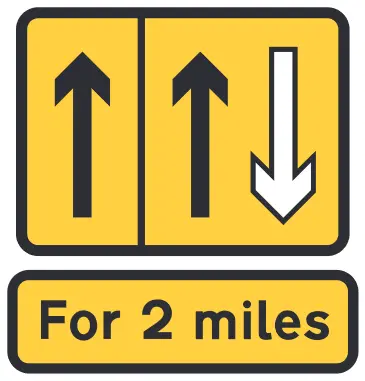What is a contraflow system?
In a contraflow system, the traffic permitted to use a contraflow lane travels in the opposite direction to traffic in the other lanes on the road. They can be permanent, as in the case of contraflow bus lanes, or temporary, as in the case of road works.
When approaching a contraflow system, reduce your speed in plenty of time and obey all speed limits.
When driving in a contraflow system, you’ll be travelling close to oncoming traffic and sometimes in narrow lanes. You may be driving in a lane with no permanent barrier between you and the oncoming traffic.
You need to also be aware that the hard shoulder may be used for traffic and that the road ahead could be obstructed by slow-moving or broken-down vehicles.
Contra-flow bus lanes
This sign shows that there is a contra-flow bus lane. The upward arrows indicate the number of traffic lanes available.
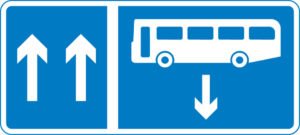
Contra-flow bus and cycle lanes
This sign indicates there is a contra-flow bus and pedal cycle lane on the road at the junction ahead.
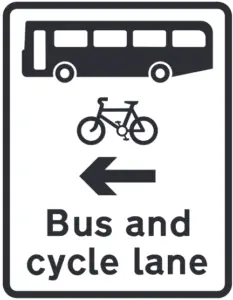
Road markings for a contra-flow lane
Here is an example of road marking for a contra-flow bus lane that is also used by cyclists.
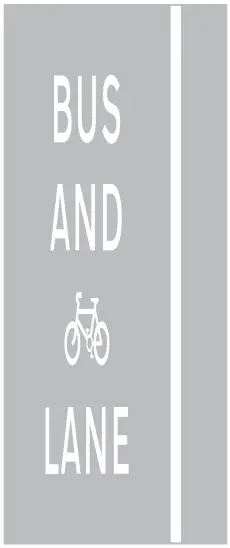
Temporary contraflow lanes
The white downward-pointing arrow indicates a contra-flow traffic lane separated by traffic cylinders. Where the contra-flow lane is separated by a physical barrier or a buffer lane (a lane closed to traffic), the white arrow is not shown.
Where a contra-flow system operates, traffic cylinders are used to separate opposing flows of traffic in adjacent lanes.

The signs below show how lanes cross back from the opposite carriageway at the end of a contra-flow system.
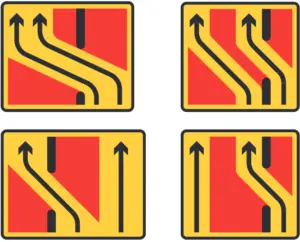
View more in the ‘Know Your Traffic Signs’ PDF from the DVSA.

